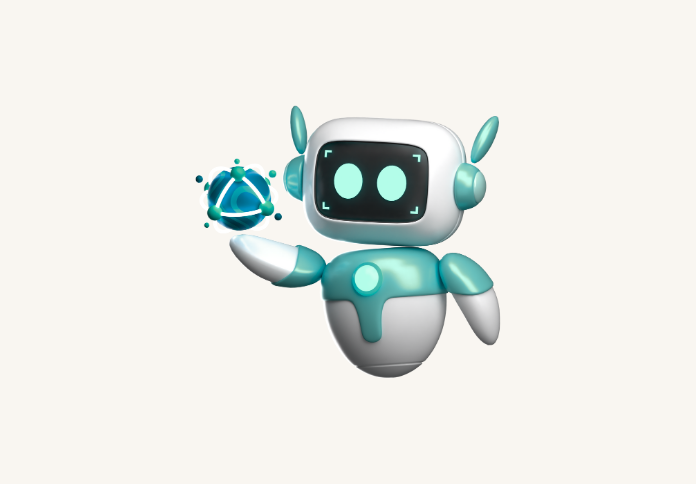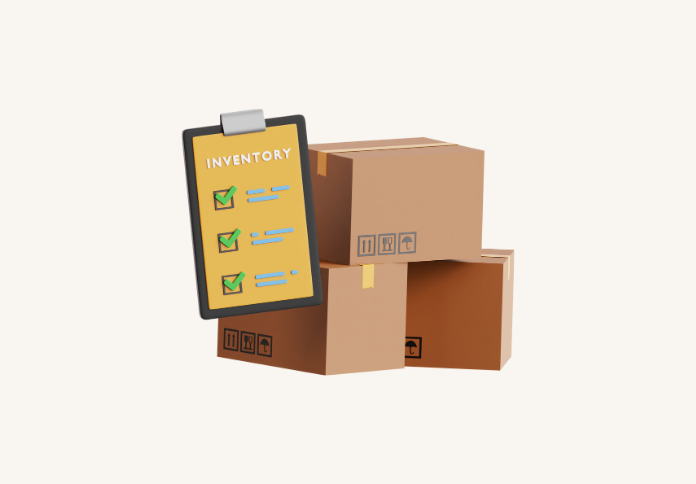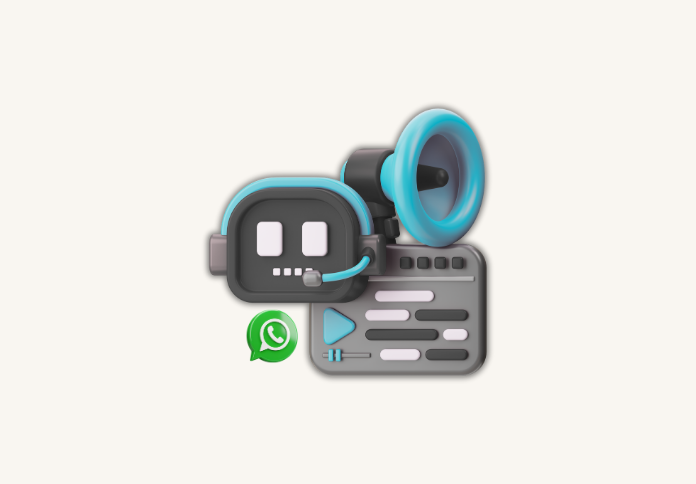
AI Agent: Your Intelligent Assistant
AI Agent: Your Intelligent Assistant
You're always searching for ways to make your work easier and more efficient. An artificial intelligence assistant can really change the game for you.
Think about having a virtual assistant ai that can do tasks for you, make smart choices, and learn from its experiences. That's what an ai agent can do for you.

With an ai agent, you can automate boring tasks, get insights from data, and make better decisions. This can make a big difference in how much you get done and how well you do it.
Key Takeaways
- AI agents can simplify workflows and enhance efficiency.
- They can automate repetitive tasks and provide valuable insights.
- AI agents have the ability to learn and adapt to new situations.
- They can assist in making informed decisions.
- AI agents can be a valuable tool in improving productivity.
What Is an AI Agent and How Does It Work
AI agents are smart virtual assistants that make your digital life easier. They are key in today's tech world. These programs use advanced AI technology to meet your needs.
Core Components of Modern AI Agents
Modern AI agents have several important parts for a smooth user experience. These include:
- Advanced Algorithms: AI agents use complex algorithms to handle and analyze data.
- Machine Learning: They learn from interactions and get better over time through machine learning.
- Natural Language Processing: NLP lets AI agents understand and reply to human language.
The Intelligence Behind AI Assistants
The smarts of AI assistants come from their ability to process and understand lots of data. This is thanks to:
Machine Learning Foundations
Machine learning is key for AI agents. It lets them learn from data and get better. They are trained on big datasets for accurate predictions and decisions.
Natural Language Processing Capabilities
NLP is also essential for AI agents. It helps them understand and answer user questions like a human. They process and analyze natural language inputs for relevant and accurate responses.
https://www.youtube.com/watch?v=fXizBc03D7E
| Component | Function | Benefit |
|---|---|---|
| Machine Learning | Enables learning from data | Improved accuracy over time |
| NLP | Understands human language | Enhanced user interaction |
| Advanced Algorithms | Processes complex data | Efficient data analysis |
The Evolution of AI Agent Technology
You've seen a big change in AI agent technology. It started with simple rules and now we have advanced cognitive systems.
From Rule-Based Systems to Cognitive Computing
At first, AI agents followed set rules. But, with new machine learning, they can learn and get better. Machine learning assistants now improve with more data.
Now, AI agents can handle complex info, understand language, and make smart choices based on what's happening.
Recent Advancements Shaping Today's AI Assistants
In recent years, AI has gotten a lot better. This is thanks to better natural language skills, machine learning, and data analysis.
"AI is not just about processing data; it's about understanding and acting on that data in a way that's meaningful to humans."
Today's AI agents are smarter and more helpful. They can help with many tasks and in different fields.
| Feature | Rule-Based Systems | Cognitive Computing Systems |
|---|---|---|
| Learning Ability | Limited | High |
| Adaptability | Low | High |
| Complexity Handling | Simple | Complex |

Types of AI Agents You Can Implement Today
AI has made it possible to create intelligent agents that boost your business. These agents meet different needs, from personal help to complex tasks. They are designed to make your work easier.
Virtual Personal Assistants
AI-powered virtual personal assistants manage your schedule and emails. They learn your habits to work better over time. For example, virtual assistant AI can automate daily tasks.
Customer Service and Support Agents
AI is changing how businesses talk to customers. Intelligent virtual agents handle questions and solve problems 24/7. This improves customer happiness and cuts costs.
Specialized Industry-Specific Agents
AI agents are made for specific industries. Here are a few examples:
Healthcare Assistants
In healthcare, AI helps with patient data and scheduling. It can spot trends and alert doctors to issues.
Financial Advisors
AI financial advisors analyze markets and give investment tips. They quickly process data, giving insights humans might miss.
Educational Tutors
AI educational tutors tailor learning to each student. They offer feedback and help with tough concepts.
These AI agents are used in many fields, as shown in the table below:
| Industry | AI Agent Type | Primary Function |
|---|---|---|
| Healthcare | Healthcare Assistants | Patient Data Management |
| Finance | Financial Advisors | Investment Advice |
| Education | Educational Tutors | Personalized Learning |
A recent study found that
"The use of AI agents in industries is a big change towards better services."
As AI gets better, these agents will do even more. They will change how businesses work even more.

How to Choose the Right AI Agent for Your Needs
To find the perfect AI assistant, start by looking at your current workflow. See where you could improve. Choosing the right AI agent means knowing what you need and checking out what's available.
Assessing Your Workflow Requirements
First, think about your daily tasks. Find the tasks that take too much time or are repetitive. An AI agent can help with these. Also, consider the data you work with and how much customer interaction you handle.
Evaluating Available AI Assistant Platforms
Next, look into different AI assistant platforms. See what they can do. Choose platforms that let you customize and grow with your needs.
| Platform | Key Features | Scalability |
|---|---|---|
| Platform A | Customizable, NLP capabilities | High |
| Platform B | Integration with CRM, automation | Medium |
Compatibility with Existing Systems
Make sure the AI agent works well with your current systems. This includes your CRM, customer service tools, and other important tech.

Step-by-Step Guide to Setting Up Your AI Agent
To start with your AI assistant technology, follow this guide for a smooth setup. Setting up your AI agent is like setting up a digital assistant ai for your daily tasks. It involves several key steps to tailor it to your needs.
Initial Configuration Process
The initial setup is key for your AI agent to work right. It has two main steps:
Account Creation and Setup
First, create an account on the AI assistant platform you've chosen. You'll need to give some basic info and verify your email. Make sure to use a strong password to keep your account safe, just like with any virtual assistant ai platform.
Basic Parameter Configuration
After your account is set up, you'll need to adjust some basic settings. This includes your preferred language, time zone, and other settings that affect how your AI agent works.
Customization for Moroccan Users
For users in Morocco, making your AI agent your own is important. Here are some tips:
Language and Dialect Settings
Morocco has many languages and dialects. Your AI agent can be set to understand and speak in Arabic, French, or Amazigh. Pick the language that fits your needs best.
Cultural Context Adaptation
Adapting your AI agent to Moroccan culture makes it more useful. This means adding local customs, holidays, and sayings to make it feel more natural.
Experts say, "Making AI fit local contexts is key for its success."
"The future of AI is in adapting to different cultures," said Dr. Fatima Zahra, an AI researcher.
Here's a quick summary of the main steps:
| Step | Description | Importance |
|---|---|---|
| Account Creation | Setting up your account on the chosen platform | High |
| Basic Parameter Configuration | Configuring basic settings like language and time zone | High |
| Language and Dialect Settings | Choosing the right language for your AI agent | Medium |
| Cultural Context Adaptation | Adapting the AI to local customs and expressions | Medium |

By following these steps, you can make sure your AI agent is set up right and meets your needs, whether for personal or work use.
Training Your AI Agent for Maximum Efficiency
To get the most out of your AI agent, you need a solid training plan. This plan should cover data collection, training methods, and how to give feedback.
Data Collection Methods
Getting good data is key to training a top-notch AI agent. You can collect data in several ways, like:
- User interactions
- Historical data
- Real-time data feeds
The better and more varied your data, the better your AI agent will perform.
Implementing Training Protocols
After you have enough data, it's time to start training. You'll need to pick the right machine learning methods.
Supervised Learning Approaches
Supervised learning uses labeled data to train your AI agent. It's great for tasks that need exact answers.
Reinforcement Learning Techniques
Reinforcement learning lets your AI agent learn by trying things and getting feedback. It's perfect for tricky tasks.
Creating Effective Feedback Loops
Feedback loops are essential for making your AI agent better over time. By using user feedback to tweak your training data, you can make your AI agent more accurate and efficient.
| Training Method | Description | Benefits |
|---|---|---|
| Supervised Learning | Training on labeled data | High precision |
| Reinforcement Learning | Learning through interaction | Adaptability to complex tasks |

How to Integrate AI Agents with Your Existing Workflow
To get the most out of AI assistant technology, it's key to integrate it smoothly with your current workflow. This integration lets your digital assistant AI work well with your systems, boosting productivity.
API Connection Process
Connecting your AI agent to your systems through APIs is a big step. It involves several important parts:
Authentication Setup
Setting up proper authentication is vital for safe data sharing between your AI agent and other systems. This usually means using OAuth tokens or API keys.
Endpoint Configuration
Setting up the right endpoints lets your AI agent talk to the right services. You need to understand the API documentation and what data formats each endpoint expects.
Database Integration Strategies
Linking your AI agent with your databases helps it work with data better. You can use database connectors or write custom scripts for integration.
Important things to think about for database integration include:
- Keeping data consistent and safe
- Improving query speed
- Adding strong data security
Security Implementation Best Practices
When adding AI agents to your workflow, security is a top priority. Best practices include:
"Using strong encryption for data, keeping systems updated, and doing detailed risk assessments."

By sticking to these tips and best practices, you can make sure your AI agent is securely and efficiently integrated into your workflow. This way, you'll get the most out of your intelligent virtual agent.
Practical Applications of AI Agents in Morocco
AI agents are changing many areas in Morocco, like business, education, and government. Learning about these uses can give you great ideas for your work.
Business Implementation Examples
Businesses in Morocco are using AI agents to make things better. They're improving customer service and automating tasks.
Customer Service Transformation
AI chatbots are helping with customer support 24/7. They answer questions and solve problems fast. This makes customers happier and helps human support agents too.
Administrative Task Automation
AI agents are taking over routine tasks like data entry and scheduling. This lets employees do more important work.
| Sector | AI Application | Benefit |
|---|---|---|
| Customer Service | AI-powered chatbots | Improved customer satisfaction |
| Administration | Task automation | Increased efficiency |
Educational Use Cases
Schools are using AI agents to make learning better. They offer personalized lessons, adaptive tests, and instant feedback.
Government and Public Service Applications
Government agencies are using AI agents to improve services. They help with application processing, information, and citizen engagement.

Troubleshooting Common AI Agent Issues
Fixing problems with AI agents is essential for their success. You might face several issues that affect their work. These can slow them down or make them less effective.
Resolving Response Accuracy Problems
One big problem is when AI agents don't answer correctly. To fix this, make sure your AI assistant technology learns from a wide range of data. Keep this data up to date with new information.
- Review and refine your training data
- Implement feedback mechanisms to correct inaccuracies
- Continuously monitor performance and adjust as needed
Fixing Integration Challenges
Connecting your intelligent virtual agent with other systems can be tough. Make sure everything works together by using standard APIs. Also, test everything well before you start using it.
- Assess your current infrastructure for compatibility
- Use APIs that support seamless integration
- Test integrations thoroughly before deployment
Addressing Performance Bottlenecks
Slow performance can hurt your smart bot's ability to work well. Find out where the slowdowns are and fix them. You can do this by adding more resources or making your code better.

By solving these common problems, your AI agents will work better. They'll help your work flow more smoothly.
Measuring and Optimizing Your AI Agent's Performance
To keep your ai agent on track, you must track its performance. This means looking at key indicators, checking user happiness, and always looking for ways to get better.
Essential Performance Metrics
When checking your ai agent's work, look at how accurate it is, how well it solves problems, and how much users interact with it. Response accuracy shows if the ai agent answers correctly. The resolution rate shows how often it solves problems on its own.
By watching these numbers, you can see where you need to make changes. For example, if it's not answering right, you might need to update its training.
User Satisfaction Measurement
User happiness is key to your ai agent's success. You can check this by asking users for feedback, using surveys, or analyzing how they feel about talking to the ai agent. Sentiment analysis helps you see how users feel about their interactions.
Continuous Improvement Strategies
To keep your ai agent performing well, always be looking for ways to improve. Update its knowledge, make it understand user questions better, and change its answers to fit what users need.

By following these steps, you can make sure your ai agent stays effective and keeps meeting your users' needs.
Conclusion: Embracing the Future with AI Agents
AI technology is growing fast, and AI agents are becoming key in many areas of life and work in Morocco. By using this tech, you can see big improvements in how things get done and how well they're done.
An ai agent can change your work by doing tasks for you, giving smart help, and making better choices. Virtual assistant ai is being used in many fields. It helps companies work better and make customers happier.
Intelligent virtual agents are changing how companies talk to customers. They offer personal help and make customers more satisfied. If you get an ai agent, you'll likely see better work, happier customers, and more success.
Knowing what AI agents can do and using their power can help you stay ahead. This technology offers many chances to grow and succeed.
FAQ
What is an AI agent, and how can it assist me?
An AI agent is a smart virtual assistant. It makes your work easier and more efficient. It helps with tasks like customer service and admin work, thanks to machine learning and natural language processing.
How do AI agents understand and interact with users?
AI agents use natural language processing (NLP) and machine learning. NLP helps them get what we say. Machine learning lets them get better at answering us over time.
What types of AI agents can I implement in my organization?
You can use many types of AI agents. There are virtual personal assistants, customer service agents, and agents for specific industries. They work in places like business, education, and government.
How do I choose the right AI agent for my needs?
First, think about what you need from an AI agent. Look at different platforms and see if they fit with your systems. This helps them work well together.
How do I set up and customize my AI agent for Moroccan users?
Start by following a setup guide. Make sure it's ready for Moroccan users by adjusting language and culture settings. This makes it more useful and friendly.
How do I train my AI agent for maximum efficiency?
To train it, collect data and use learning methods like supervised and reinforcement learning. Also, create feedback loops to keep improving its skills.
How do I integrate my AI agent with existing workflows?
Connect it using APIs, setting up authentication and endpoints. Also, think about how to integrate with databases and follow security best practices.
What are some practical applications of AI agents in Morocco?
AI agents can help in many ways in Morocco. They can improve customer service, automate tasks, and enhance education and public services.
How do I troubleshoot common issues with my AI agent?
First, figure out the problem. Then, use solutions for issues like accuracy, integration, and performance. This keeps your AI agent working well.
How do I measure and optimize my AI agent's performance?
Track important metrics and check how users feel about it. Always look for ways to improve. This keeps your AI agent effective and user-friendly.
What is the future of AI agents, and how can they benefit my organization?
AI agents will change many areas for the better. By using them, you can make your work more efficient, improve customer service, and boost productivity.





